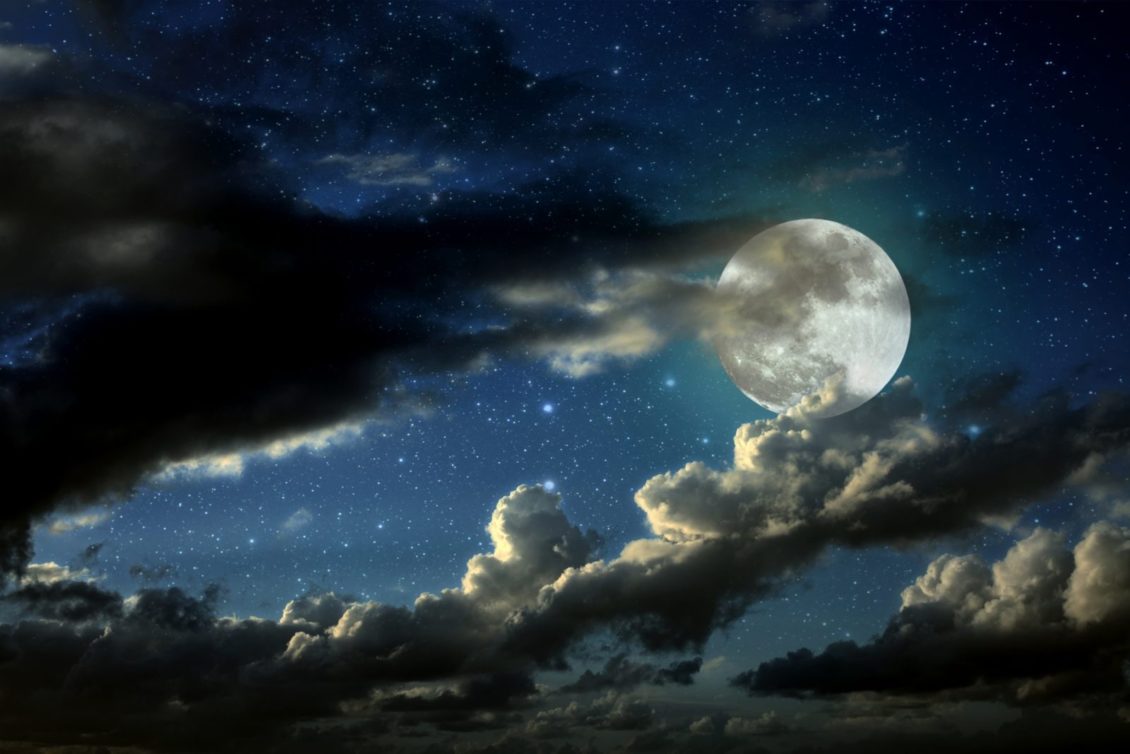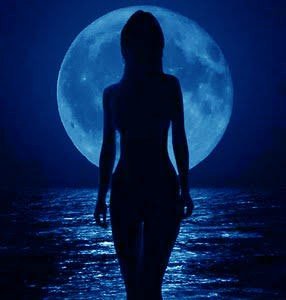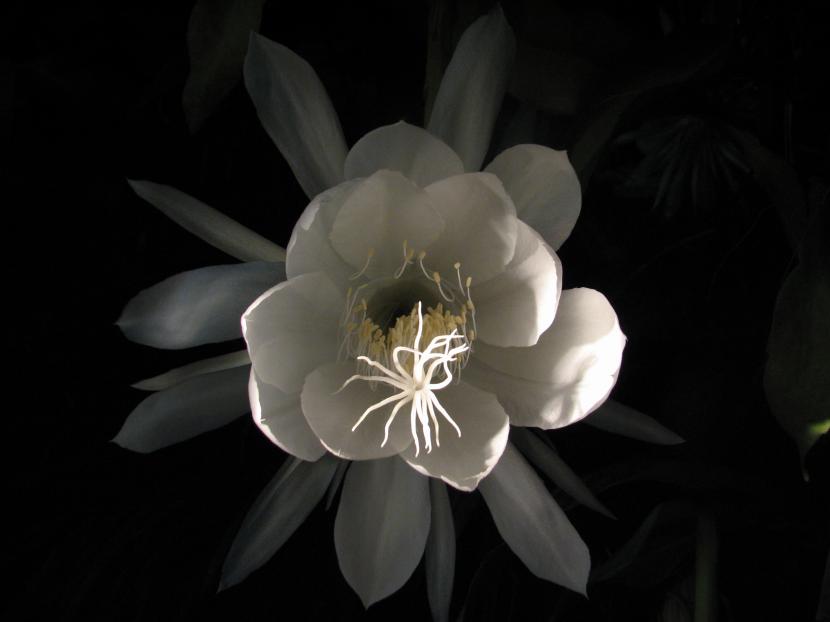Aquelars, cults and invocations are usually celebrated at night, bathed in the light of the full moon. In addition, in the nights of full moon, the lyántropos become wolf. And is that our satellite has a halo mysterious, mystical and even sinister. It is said to have some power over all living things, including humans, and virtually all cultures in the world harbor beliefs that attribute magical properties to it. In fact, many of us take into account the influence of the lunar cycles when pruning a plant or cutting our hair. But, what is true in all these beliefs? Do they have any scientific basis?

Fertility and childbirth
The Moon, whose cycles last 28 days (just like the menstrual period), has always been related to the female sex, and in ancient times many cultures have worshiped it in fertility cults. Thus, it is obvious that these 28 days have been key in linking menstrual cycles, moles and fertility.

Throughout history and on many occasions numerous doctors and scientists have studied this phenomenon and have not found any relation between the lunar phases and the fertility. For example, scientists at the University of Castilla-La Mancha prepared a study on the relationship between the number of children born and the lunar cycles. Francisco García Alcaraz, a professor of nursing at the university and one of the authors of the research, said that after analyzing all deliveries in the hospital in Albacete, no relationship had been found between these and the lunar phases.
Sowing
Our refrain is full of expressions like "In waning, nothing plantes" or "In full moon, chop the wood". These expressions are based on the influence that the Moon has on the bodies of water, as is the case of the tides. As it revolves around the Earth, the Moon exerts an attraction on the continent and the oceans, raising several meters the water level in some places. In the same way, the sap would rise or fall according to the lunar cycle: during the new moon phase the sap would concentrate on the roots and full moon on the leaves, attracted by gravitational forces. Therefore, the first would be propitious time for sowing while the second, for harvesting.

Many studies have tried to test or refute this theory. It is as simple as planting on supposedly "good" and "bad" days under the same experimental conditions (water, soil, etc.). And that's what a group of researchers from the University of Canberra, Australia did. Then they collected the plants, weighed them (bulbs and leaves) and compared those that had been harvested and planted in different lunar phases. The truth is that no significant difference was detected. And is that the attraction exerted by the full moon affects the sea because of its large body of water. The sap, on the other hand, has an insignificant mass, too small to be attracted to the Moon.
Another theory refers to the activity of plant light receptors (phytochromes). It has been proven that on full moon nights phytochrome is active as when there is daytime light, whereas when there is no moon (new moon) the phytochrome lowers its activity. Then there would be no difference in cutting a waning or growing tree, since the plant would have the same activity (waning and rising, lighting is the same, 50%).
Human behavior
Just as Luna "affects" plants, so would humans. This belief is governed by the same principle: the gravitational effect of the moon (which attracts the earth to it) on the earth would affect human behavior. If the water of the oceans is altered by the Moon, the liquids of our body should also be altered, which in turn would modify our behavior. How would the moon change our behavior? Supposedly, in this lunar phase, we are more euphoric, anxious, violent, restless ... in the end, more nervous. With this, on the nights of full moon, the number of murders, suicides, fights or robberies would increase ...
When there is full moon, the water of the oceans rises (tide) when because the distance between the Moon and Earth decreases, since it increases the attraction force that the satellite exerts on our planet. The distance greater or lesser distance between the Earth and the Moon also produces changes in the atmospheric pressure affecting, along with gravity, the climate of our planet.
But differences in scale and proportion must be taken into account. The force of the tide is very weak with respect to the volume of water involved. From a physical point of view the Moon can not be expected to exert an additional gravitational effect on the human body greater than that produced by a mosquito.
We must also consider that the distance between our satellite and Earth is the same during the nights of full moon and new moon. In other words, the gravitational force of the Moon is just as intense during its full and new phase. What's more, the most intense tides occur in the new moon, because at this stage there is another force that exerts an attraction on Earth, the gravity of the Sun (pulls in the same direction as the Moon). So why is it not said that the new moon affects our behavior?
Statistical studies have been conducted in hospital emergency rooms and police stations and no correlation has been found between the lunar phases and the number of hospital admissions. Nor have the police stations recorded a greater number of complaints during full moon nights.
Hair and nail growth
The same principle would apply to hair and nails. In fact it is believed that, just as the Moon "affects" our behavior, it conditions the growth of our hair and nails.
Our nails grow at different rates. Those of the hands at a rate of 3 millimeters per month and those of the feet 1.5 millimeters. Hair grows, on average, one centimeter per month. Small variations in the speed of growth of our hair are related to genetic predisposition, food and healthy lifestyle.
If we exert some mechanical pressure on the nails (for example, playing the piano), we promote greater growth. It has also been proven that a higher temperature stimulates the growth of nails and hair. On the other hand, it has not been possible to verify that the Moon exerts some type of influence, something strange considering that this connection is very rooted in the collective thought. Perhaps in the future they will prove otherwise.
According to the scientists, all these beliefs arise from a cognitive bias of confirmation: people tend to accept information that confirms their belief and ignore that which contradicts it. The most skeptical refer to this belief (relation lunar cycles / planting, human behavior or fertility) as the Transylvania hypothesis or the effect of Transylvania to emphasize its fanciful character.
However, the truth is that many of our farmers continue looking at the sky and consulting lunar calendars to fix their date of pruning or sowing, as did their ancestors. It is hard to imagine that throughout so many generations we have been guided by a totally erroneous and unfounded belief. Who knows, there may be some evidence later to corroborate that the Moon influences living beings.
And you, do you think that the Moon has any influence on living things?
References:
Desenmascarando Fraudes
Wikipedia

It reminds me of a presentation i did when i was studying finance in University.
I had to convince people that human beings are not rational in opposition with the concept of Homo oeconomicus. I had to show that our investing behaviors are impacted by external influences.
You can see for example here that the full moon had a bad influence in investment decisions.
Most of the time, with the full moon, people are pessimistic, feeling angry or uncomfortable.
It is what it is :)
Downvoting a post can decrease pending rewards and make it less visible. Common reasons:
Submit
Good picture, I am interesting blog for you
Downvoting a post can decrease pending rewards and make it less visible. Common reasons:
Submit
If the Luna can change the ocean tides and Sol change the weather, then how could it not affect the way cells react to each other.
Downvoting a post can decrease pending rewards and make it less visible. Common reasons:
Submit